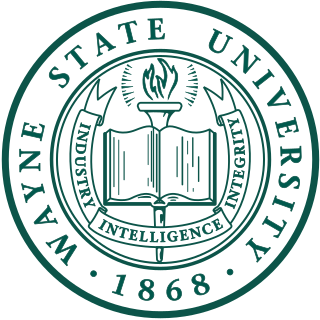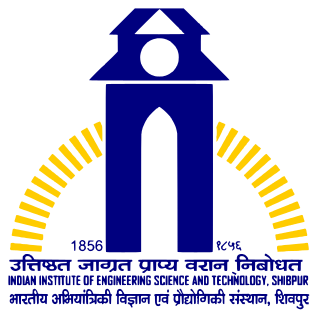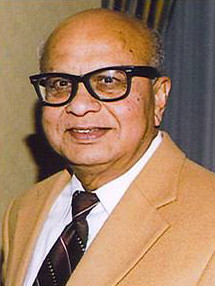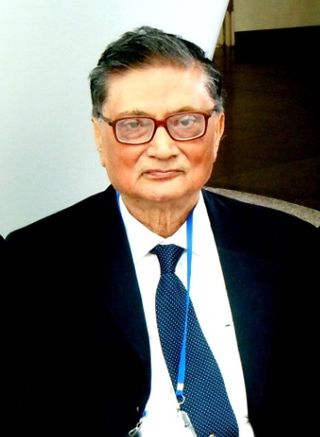Related Research Articles

Wayne State University is a public research university in Detroit, Michigan. It is Michigan's third-largest university. Founded in 1868, Wayne State consists of 13 schools and colleges offering approximately 350 programs to nearly 24,000 graduate and undergraduate students. Wayne State University, along with the University of Michigan and Michigan State University, compose the University Research Corridor of Michigan. Wayne State is classified among "R1: Doctoral Universities – Very high research activity".

Indian Institute of Engineering Science and Technology, Shibpur, abbreviated as IIEST Shibpur is a public university located at Shibpur, Howrah, West Bengal. Founded in 1856, it is recognised as an Institute of National Importance under MHRD by the Government of India. It is controlled by the Council of NITSER.

Shibpur or Sibpur is a neighbourhood in Howrah city of Howrah district in the Indian state of West Bengal. It is a part of the area covered by Kolkata Metropolitan Development Authority (KMDA).
Sumit Sarkar is an Indian historian of modern India. He is the author of Swadeshi Movement.
The systems of secondary and post-secondary education in Kolkata are listed as follows:

National Institute of Technology Agartala is a technology-oriented institute of higher education established by India's Ministry of Human Resource Development Government of India in Agartala, India. It was founded as Tripura Engineering College in 1965 and declared a National Institute of Technology (NIT) in 2006, thus being recognized as an Institute of National Importance.

Tapan Raychaudhuri was a British-Indian historian specialising in British Indian history, Indian economic history and the History of Bengal.
Brajendranath Dey was an early Indian member of the Indian Civil Service.

Tathagata Roy is an Indian politician who served as the Governor of Tripura from 2015 to 2018 and the Governor of Meghalaya from August 2018 to the end of his term in August 2020. He was the 6th president of West Bengal state unit of Bharatiya Janata Party from 2002 to 2006 and a member of the BJP National Executive from 2002 until 2015.
Hem Chandra Raychaudhuri was an Indian historian, known for his studies on ancient India.

Bimal Kumar Bose, also known as B. K. Bose, is an electrical engineer, artificial intelligence researcher, scientist, educator, and currently a professor emeritus of power electronics in the Department of Electrical Engineering and Computer Science at the University of Tennessee, Knoxville.

Dipankar Datta is a Judge of Supreme Court of India. He is the former Chief Justice of Bombay High Court and the Judge of Calcutta High Court.

Dinesh Mohan was honorary professor at Indian Institute of Technology Delhi since 2017. He was distinguished professor at Shiv Nadar University, Gautam Buddha Nagar (India) from 2016 to 2018. From 2010 to 2015 he was Emeritus Volvo Chair Professor for Transportation Planning & Safety at IITD. He was head of Centre for Biomedical Engineering (1991–1996), Coordinator of the Transportation Research and Injury Prevention Programme (1998–2010) and head, W.H.O. Collaborating Centre for Research and Training in Safety Technology at IIT Delhi (1991–2010). He was also Director, Independent Council for Road Safety International (www.icorsi.org).

Asok Kumar Barua was an Indian condensed matter physicist and the honorary Emeritus Professor of Indian Institute of Engineering Science and Technology, Shibpur, who focused on research in optics and optoelectronics. He was honoured by the Government of India in 2003 with Padma Shri, the fourth highest Indian civilian award.

Subhas Datta is an environmental activist, and has been so for over three decades. He is a qualified chartered accountant by profession. Since 1995, Datta has aired the grievances of the masses before the judicial forum through filing Public Interest Litigation (PIL).

Swapan Kumar Datta is a (Professor) of rice biotechnology who focuses on genetic engineering of Indica rice. Datta has demonstrated the development of genetically engineered Indica rice from protoplast derived from haploid embryogenic cell suspension culture. Golden Indica Rice with enriched Provitamin A and Ferritin rice with high iron content were developed by his group with a vision to meet the challenges of malnutrition in developing countries. Datta has been named as one among the top 25 Indian scientists from all fields of science by India Today.
M. A. Rashid was a Bangladeshi educator. He served as the 1st Vice-chancellor of Bangladesh University of Engineering and Technology during 1962–1970. He was awarded Independence Day Award in 1982 by the Government of Bangladesh.
Amitabha Bhattacharyya was an Indian production engineer and the director of the Indian Institute of Technology, Kanpur. He was credited with the establishment of the department of production engineering at Jadavpur University. The Council of Scientific and Industrial Research, the apex agency of the Government of India for scientific research, awarded him the Shanti Swarup Bhatnagar Prize for Science and Technology, one of the highest Indian science awards for his contributions to Engineering Sciences in 1971.

The University College of Science, Technology and Agriculture are two of five main campuses of the University of Calcutta (CU). The college served as the cradle of Indian Sciences by winning the Nobel Prize in Physics in 1930 and many fellowships of the Royal Society London.
References
- 1 2 3 4 5 "International Spotlight: Dr. Tapan Datta". Engineering.wayne.edu. Archived from the original on 2013-12-27. Retrieved 2013-12-27.
- 1 2 3 4 5 6 7 8 9 10 11 12 13 14 "Tapan Datta Homepage". Eng.wayne.edu. 2012-11-20. Retrieved 2013-12-27.
- 1 2 3 4 5 6 7 8 9 10 11 12 13 14 15 16 17 18 19 20 "Dr. Datta Interview Audio Files". Mediafire.com. Retrieved 2013-12-27.
- 1 2 "Wayne State Transportation Research Group". Eng.wayne.edu. 2013-11-13. Retrieved 2013-12-27.